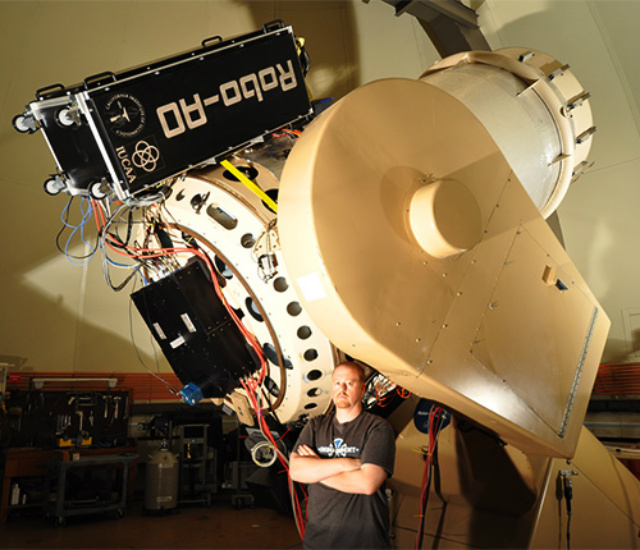Tracking down Earth-like exoplanets with a terrestrial telescope is no easy feat because our planet’s atmosphere makes distant solar systems even harder to see. Adaptive optic technology can help make things go a little faster, but it does so at a snail’s pace — requiring up to 10 minutes per target. The fully autonomous Robo-AO system, however, lets any telescope lock on to targets in just 60 seconds. Let the hunt for Earth 2.0 begin!
Developed by a team of researchers from around the globe, the Robo-AO is touted as the first fully autonomous adaptive optics and imaging system by its inventors. The million dollar device can be attached to any ground-based 1- to 3-meter class telescope. It not only operates ten times faster than existing adaptive optics systems, but also delivers exceptionally crisp images on par with those captured by the Hubble Space Telescope.
“Ultimately we see that this is the kind of system that can end up on every telescope of this size around the planet,” Nicholas Law, assistant professor at the University of North Carolina, told IEEE Spectrum.
The Robo-AO has already been installed on the Palomar Observatory’s 60-inch telescope and completed the single largest adaptive optics survey ever conducted, observing 715 Kepler candidate planets in just one observation season.

“The automation of laser adaptive optics has allowed us to tackle scientific questions that were unimaginable just a few years ago. We can now observe tens of thousands of objects at Hubble-Space-Telescope-like resolution in short periods of time,” Dr. Christoph Baranec of the University of Hawaii said in a press statement. “Now that the technology has been proven, we’re looking to bring it to the pristine skies of Maunakea, Hawaii, where it will be even more powerful.”
The researchers already have another 4,000 or so potential exoplanets to investigate in the coming months as well as any new targets discovered during the Kepler’s upcoming K2 mission. The team is currently raising funds to build a second Robo-AO unit. Time to map the whole abyss. [IEEE – University of Hawaii 1, 2]
